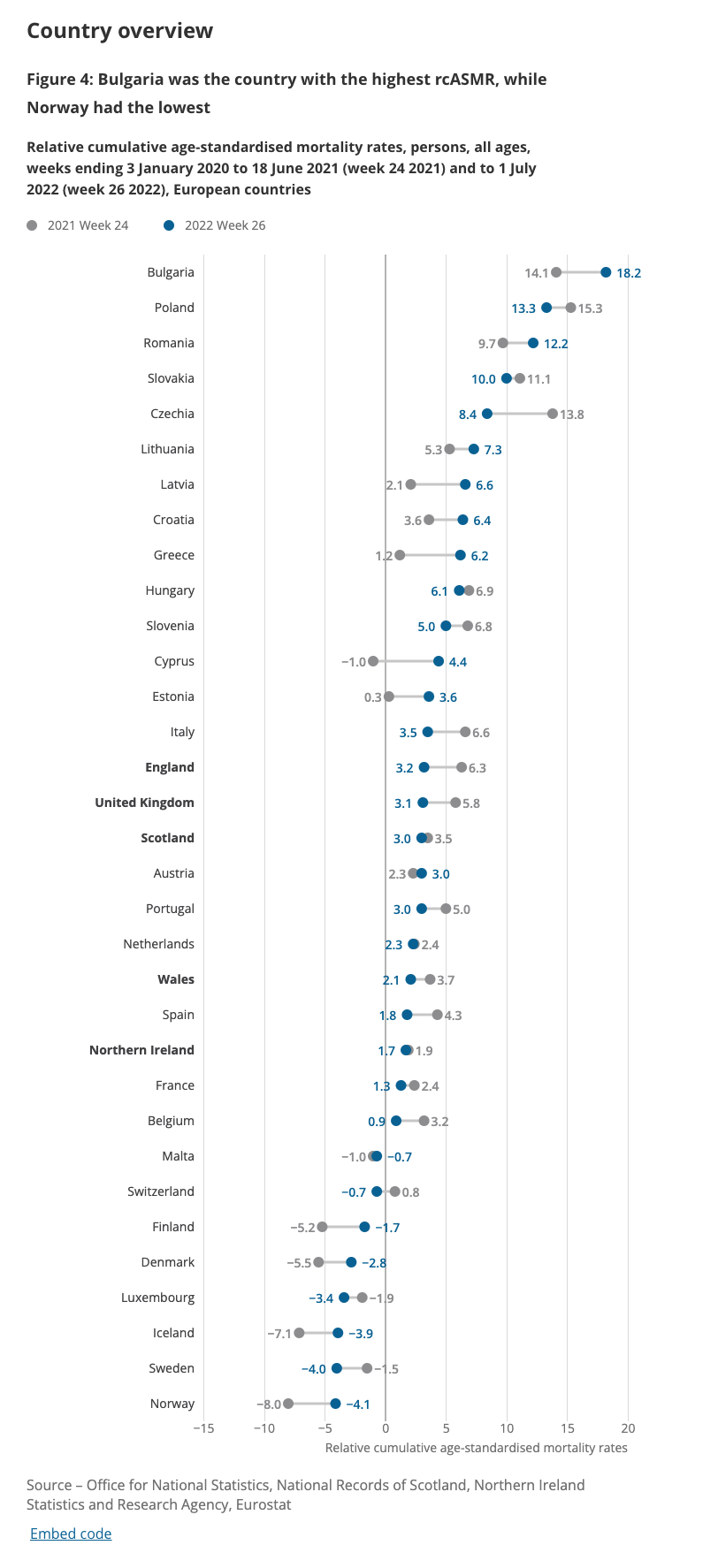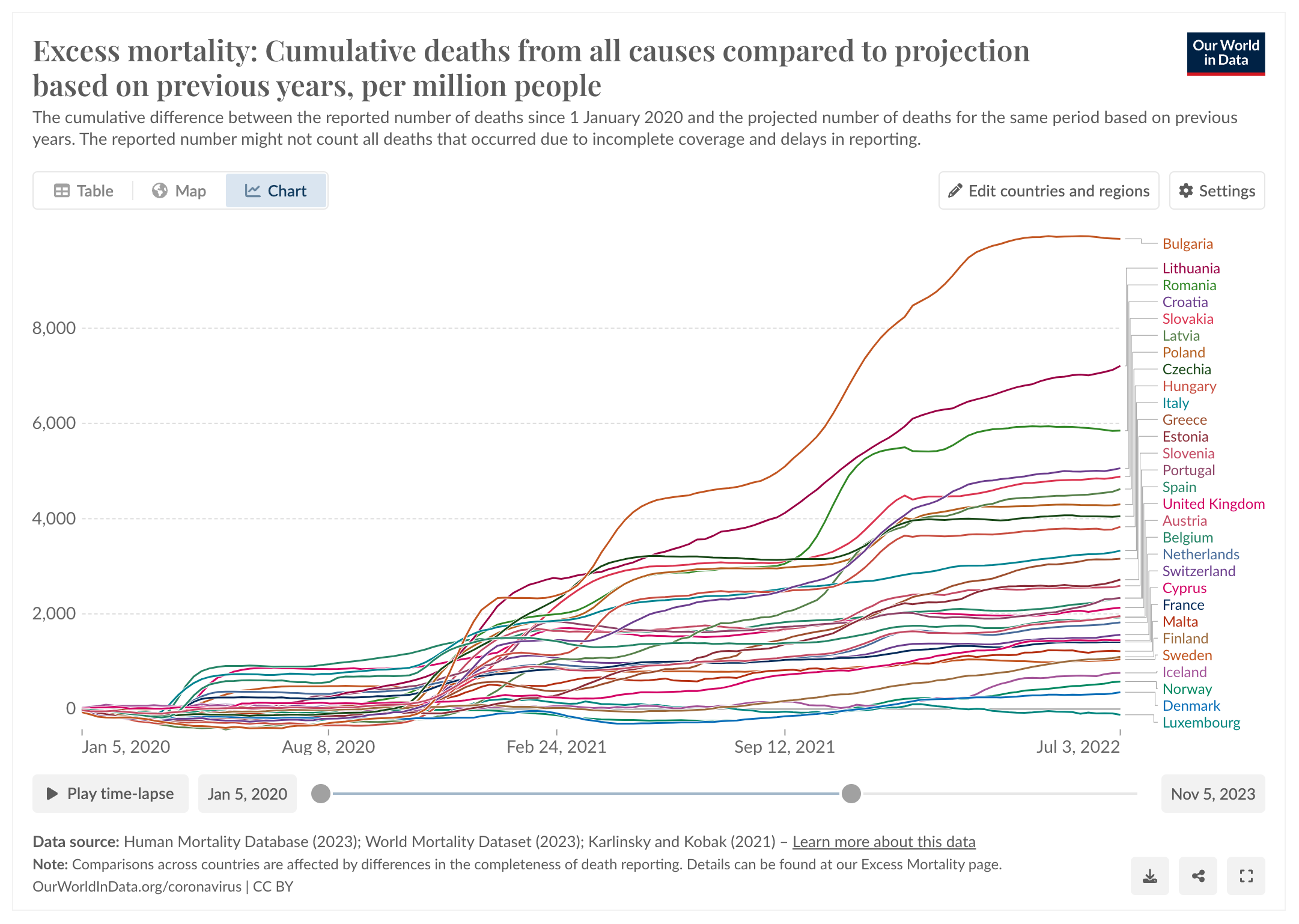Was Boris Johnson right to dispute Covid Inquiry evidence on excess deaths?
The former prime minister, Boris Johnson, and the lead counsel to the Covid Inquiry, Hugo Keith KC, appeared to disagree on Wednesday morning about how badly the UK was affected by the pandemic, relative to other countries. Each used a different source to support his point.
In terms of excess deaths during the pandemic period, Mr Johnson said the UK was “well down the European table”. He later added that data he’d seen from the Office for National Statistics (ONS) showed the UK “16th or 19th in a table of 33”.
Mr Keith agreed that a chart he’d used earlier in the inquiry showed the UK “second only to Italy for excess deaths”. He later clarified that he was talking about a comparison with the rest of western Europe, in which he said: “we were one of the worst off, if not the second worst off”.
This was their exchange:
Boris Johnson “In your opening preamble a few months ago, you produced a slide saying that the UK was, I think, second only to Italy for excess deaths.”
Hugo Keith “Correct.”
BJ “That’s not, to the best of my knowledge, the case… The evidence that I’ve seen suggests that we were well down the European table and well down the world table… That seems to be the statistical reality.”
HK “The evidence before my lady is that the United Kingdom had one of the highest rates of excess death in Europe. Almost all other western European countries had a lower level of excess death.”
BJ “That’s not what I’ve seen.”
HK “Italy was tragically in a worse position than the United Kingdom.”
BJ “I don’t wish to contradict you, Mr Keith, but the ONS data I saw put us I think about 16th or 19th in a table of 33.”
HK “In western Europe, we were one of the worst off, if not the second worst off.”
Honesty in public debate matters
You can help us take action – and get our regular free email
Which data are they talking about?
We cannot be certain which data Mr Johnson had in mind, and we’ve emailed him to ask. But it seems likely he was referring to Figure 4 in an ONS bulletin published in December 2022.
This ranks European countries by their “relative cumulative age-standardised mortality rates”, or rcASMRs, between the beginning of 2020 and July 2022. The ONS says rcASMRs “measure cumulative excess mortality compared with the 2015 to 2019 average mortality rates”.
The chart does indeed show the UK 16th out of 33 (if you include England as 15th, as each nation of the UK is also featured separately). However, it also shows the UK with higher excess mortality in this period than almost all other western European countries, since almost every country above the UK is in eastern Europe.
Mr Keith’s chart that Mr Johnson mentioned seems to be the final slide in this set, which he used on 3 October 2023. When introducing it, Mr Keith said: “We’ve selected them for illustrative purposes, and this isn’t intended to be a comprehensive ranking.”
This chart comes from Our World in Data, a project from the University of Oxford. It uses a similar measure: “cumulative deaths from all causes compared to projection based on previous years, per million people”, beginning in March 2020.
As Mr Keith said, this chart only shows a selection of countries, but if you add the same countries that appear in the ONS analysis, and consider the same period starting in January 2020 and ending in July 2020, it shows similar results. The UK comes 16th on the list of 29 countries (without the separate UK nations), behind Italy, Portugal and Spain and a number of eastern European countries, but above most of western Europe. 
If you consider the same period covered by Mr Keith’s chart, 1 March 2020 to 10 September 2023, then the UK is still below Italy, but above Portugal and Spain and much of the rest of western Europe.
In short, on both these measures, the experience of the UK in terms of deaths during the pandemic period was roughly in the middle, when compared with all other European countries—but among the worst, when compared to other western European countries specifically.
Image courtesy of Ben Shread


